How to handle cross-domain requests and access control in PHP?
With the development of Web applications and the popularity of the Internet, cross-domain requests and access control have become an important issue in Web development. This article will introduce how to handle cross-domain requests and access control in PHP.
Cross-domain request refers to the behavior of a Web page under one domain name sending a request to a server under another domain name. Due to security considerations, browsers limit the sending of cross-domain requests. A common way to handle cross-origin requests in PHP is by setting response headers.
In PHP, you can set the response header by setting the header function. When handling cross-domain requests, you can set the "Access-Control-Allow-Origin" header information. This header specifies the domain names that are allowed to access the resource. For example, setting it to "*" means that any domain name is allowed to access the resource, and setting it to "example.com" means that only the "example.com" domain name is allowed to access the resource.
The sample code is as follows:
header("Access-Control-Allow-Origin: *");In addition to setting the "Access-Control-Allow-Origin" header information, you can also set other cross-domain related header information, such as "Access-Control- Allow-Methods", "Access-Control-Allow-Headers", etc. These header information can specify the allowed request methods and header fields, as well as whether to allow sending cookies, etc.
It should be noted that when setting cross-domain related header information, it needs to be set before the actual business code to ensure that the corresponding header information is set before the business code is executed.
In addition to handling cross-domain requests, access control is also an important issue in web development. In PHP, access control lists (ACLs) can be used to control access rights of different users.
Access control list is a data structure that maps the access permission relationship between users and resources. In PHP, access control lists can be implemented using arrays or databases.
The sample code is as follows:
$acl = array(
'user1' => array('resource1', 'resource2'),
'user2' => array('resource1'),
'user3' => array('resource2')
);
$user = 'user1';
$resource = 'resource1';
if (isset($acl[$user]) && in_array($resource, $acl[$user])) {
// 用户有权限访问资源
// 执行相应的业务代码
} else {
// 用户没有权限访问资源
// 返回相应的错误信息
}In the above example, by checking the mapping relationship between users and resources in the access control list, it can be determined whether the user has permission to access the resource. If the user has permission to access the resource, the corresponding business code will be executed; if the user does not have permission to access the resource, the corresponding error message will be returned.
In actual applications, access control lists can be flexibly designed according to business needs. Access control lists can be stored in the database, and corresponding interfaces are provided to manage and query access control lists.
To summarize, handling cross-domain requests and access control in PHP requires setting corresponding response header information and using access control lists. By properly setting cross-domain related header information and flexibly designing access control lists, the security and reliability of web applications can be ensured.
The above is the detailed content of How to handle cross-domain requests and access control in PHP?. For more information, please follow other related articles on the PHP Chinese website!
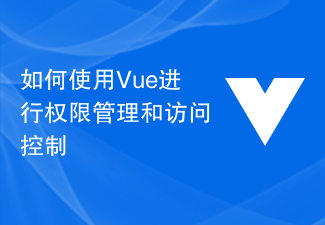 如何使用Vue进行权限管理和访问控制Aug 02, 2023 pm 09:01 PM
如何使用Vue进行权限管理和访问控制Aug 02, 2023 pm 09:01 PM如何使用Vue进行权限管理和访问控制在现代Web应用程序中,权限管理和访问控制是一项关键的功能。Vue作为一种流行的JavaScript框架,提供了一种简单而灵活的方式来实现权限管理和访问控制。本文将介绍如何使用Vue来实现基本的权限管理和访问控制功能,并附上代码示例。定义角色和权限在开始之前,首先需要定义应用程序中的角色和权限。角色是一组特定的权限集合,而
 使用Go语言解决大规模访问控制问题Jun 15, 2023 pm 02:59 PM
使用Go语言解决大规模访问控制问题Jun 15, 2023 pm 02:59 PM随着互联网的发展,访问控制问题越来越成为一个重要的话题。在传统的权限管理中,一般采用角色授权或者访问控制列表来实现对资源的控制。然而,这种方法往往无法适应大规模的访问控制需求,因为它难以灵活地实现对不同角色和资源的访问控制。针对这个问题,使用Go语言解决大规模访问控制问题成为了一种有效的方法。Go语言是一种面向并发编程的语言,它有着出色的并发性能和快速的编译
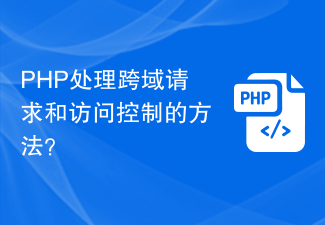 PHP处理跨域请求和访问控制的方法?Jun 30, 2023 pm 11:04 PM
PHP处理跨域请求和访问控制的方法?Jun 30, 2023 pm 11:04 PMPHP如何处理跨域请求和访问控制?摘要:随着互联网应用的发展,跨域请求和访问控制成为了PHP开发中一个重要的议题。本文将介绍PHP如何处理跨域请求和访问控制的方法和技巧,旨在帮助开发者更好地理解和应对这些问题。什么是跨域请求?跨域请求是指在浏览器中,一个域下的网页请求访问另一个域下的资源。跨域请求一般会出现在AJAX请求、图片/脚本/css的引用等情况下。由
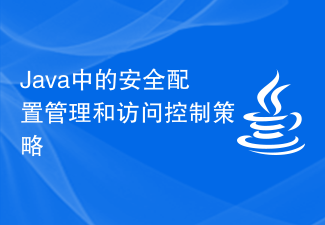 Java中的安全配置管理和访问控制策略Aug 07, 2023 am 11:01 AM
Java中的安全配置管理和访问控制策略Aug 07, 2023 am 11:01 AMJava中的安全配置管理和访问控制策略在Java应用程序开发中,安全性是一个至关重要的方面。为了保护应用程序免受潜在的攻击,我们需要实施一系列的安全配置管理和访问控制策略。本文将探讨Java中的安全配置管理和访问控制策略,并提供一些相关的代码示例。安全配置管理安全配置管理是指在Java应用程序中设置和管理各种安全机制和策略,以确保应用程序的安全性。Java提
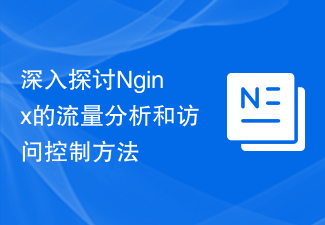 深入探讨Nginx的流量分析和访问控制方法Aug 05, 2023 pm 05:46 PM
深入探讨Nginx的流量分析和访问控制方法Aug 05, 2023 pm 05:46 PM深入探讨Nginx的流量分析和访问控制方法Nginx是一款高性能的开源Web服务器,其功能强大且可扩展,因此被广泛应用于互联网领域。在实际应用中,我们通常需要对Nginx的流量进行分析以及对访问进行控制。本文将深入探讨Nginx的流量分析和访问控制方法,并提供相应的代码示例。一、Nginx流量分析Nginx提供了许多内置变量,可用于对流量进行分析。其中,常用
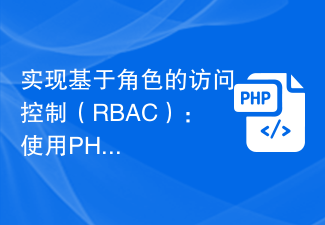 实现基于角色的访问控制(RBAC):使用PHP和RBACJun 20, 2023 pm 10:39 PM
实现基于角色的访问控制(RBAC):使用PHP和RBACJun 20, 2023 pm 10:39 PM随着互联网应用的普及,我们希望能够在应用程序内部实现对数据的保护,以保证敏感数据不乱用或不被窃取。其中之一的解决方案是使用基于角色的访问控制(RBAC)。基于角色的访问控制(RBAC)是建立在用户和角色之间的关系上的一种访问控制模型。该模型的核心思想是将用户的角色与访问控制操作联系起来,而不是将访问控制操作直接与用户联系起来。这种方式提高了访问控制的灵活性,
 如何设置强制访问控制以限制用户对文件和目录的权限Jul 05, 2023 am 08:06 AM
如何设置强制访问控制以限制用户对文件和目录的权限Jul 05, 2023 am 08:06 AM如何设置强制访问控制以限制用户对文件和目录的权限在操作系统中,强制访问控制(MandatoryAccessControl,MAC)是一种安全机制,用于限制用户对文件和目录的访问权限。相比普通的访问控制机制,如自主访问控制(DiscretionaryAccessControl,DAC),强制访问控制提供了更严格的访问控制策略,确保只有具备相应权限的用户
 Symfony框架中间件:实现高级的访问控制和保护机制Jul 28, 2023 pm 03:12 PM
Symfony框架中间件:实现高级的访问控制和保护机制Jul 28, 2023 pm 03:12 PMSymfony框架中间件:实现高级的访问控制和保护机制引言:在现代Web应用程序开发中,访问控制和安全性是非常重要的考虑因素。Symfony框架提供了一个强大的中间件系统,用于实现高级的访问控制和保护机制。本文将介绍如何使用Symfony框架中间件来实现具有灵活性和可扩展性的访问控制和保护机制。一、什么是中间件?中间件是Symfony框架中的一个关键概念。它


Hot AI Tools

Undresser.AI Undress
AI-powered app for creating realistic nude photos

AI Clothes Remover
Online AI tool for removing clothes from photos.

Undress AI Tool
Undress images for free

Clothoff.io
AI clothes remover

AI Hentai Generator
Generate AI Hentai for free.

Hot Article

Hot Tools

Safe Exam Browser
Safe Exam Browser is a secure browser environment for taking online exams securely. This software turns any computer into a secure workstation. It controls access to any utility and prevents students from using unauthorized resources.

ZendStudio 13.5.1 Mac
Powerful PHP integrated development environment

SublimeText3 English version
Recommended: Win version, supports code prompts!

Zend Studio 13.0.1
Powerful PHP integrated development environment

Dreamweaver CS6
Visual web development tools






